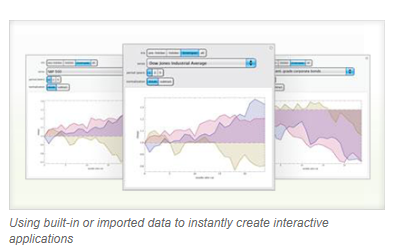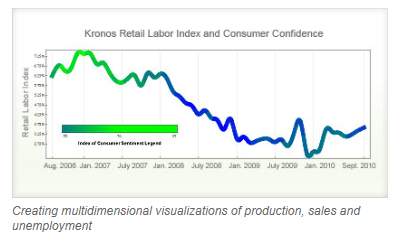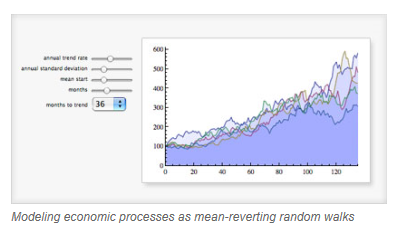Rapidly create interactive test models, analyze data and seamlessly scale up to large, high-powered simulations—all in one system, with one integrated workflow.
Rapidly create interactive test models, analyze data and seamlessly scale up to large, high-powered simulations—all in one system, with one integrated workflow.
The Wolfram econometrics solution is unique in providing built-in, ready-to-use economic data alongside powerful statistical analysis tools, built-in parallel processing and state-of-the-art symbolic and numerical computation.
The Wolfram Edge


Wolfram technologies include thousands of built-in functions and curated data on many topics that let you:
- Analyze stationary and nonstationary time series data
- Compute Monte Carlo simulations, bootstrap analysis, probability estimations and more
- Solve computationally intensive Bayesian statistics problems
- Estimate with spatial autoregressive panel data models
- Model the macroeconomic effects of federal interest rate cuts, tax policy, currency devaluation and more
- Price American, European and exotic derivatives using Monte Carlo simulation
How Wolfram Compares


Does your current tool set have these advantages?
- Complete workflow, from data import to analysis to interactive document or slide show, all in one system
R, SAS, Minitab and other software do not support a complete workflow in a single environment
- Built-in current and historical financial, socioeconomic and other data ready for computation without preprocessing
Built-in data combined with high-powered computation is unique to Wolfram technologies
- Instant creation of dynamic interfaces that allow you to vary parameters and gain useful insights from datasets
Unique to Wolfram technologies
- Automated precision control and arbitrary-precision numerics produce highly accurate results
Microsoft Excel and other systems that rely on finite-precision numerics can cause serious errors due to lack of precision
- Powerful symbolic statistical computation and built-in functions for all standard statistical distributions
R, STATA and other numerical systems do not include symbolic functionality
- Seamless integration of numerics, symbolics, interactive graphics and all other computational aspects in one document
Unique to Wolfram technologies
Key Capabilities
The Wolfram Language includes thousands of built-in functions for computation, modeling, visualization, development and deployment »
Econometrics specific capabilities:
- More statistical distributions than any other system, with the ability to define new distributions from data, formulas or other distributions »
- Estimation of distribution parameters from data and testing of goodness of fit of data to distributions
- Efficient random number generation for Markov chain Monte Carlo (MCMC) techniques, probability estimations, model likelihood calculations and more »
- Multidimensional optimization problem-solving using automated algorithm selection or user-specified methods such as simulated annealing, Nelder–Mead, differential evolution and random search »
- Easy creation of interactive applications for real-time analysis of parametric models »
- Wide variety of built-in standard charts and graphs, including pie and bar charts, paired histograms, box whisker charts, radar plots and quantile plots »
- Access terabytes of curated data from Wolfram|Alpha—including geographic, socioeconomic and demographic information—immediately ready for analysis »
- Hundreds of formats for importing and exporting data, including XLS, XML, CSV and TSV »
- Integrated parallel computing control and capabilities for solving Bayesian statistical problems or other computation- or data-intensive problems »
- Automatic generation of reports with interactive applications and text, immediately deployable using Wolfram Player or webMathematica
- Analysis of ARCH, GARCH, stationary, and nonstationary time series models such as AR, MA, ARMA, ARIMA and SARIMA using the Time Series application package »
- Model identification and diagnostic tools, including AIC/BIC model selection and partial-, auto- and cross-correlation functions using the Time Series application package »
- Integrate with Microsoft Excel with Mathematica Link for Excel »



